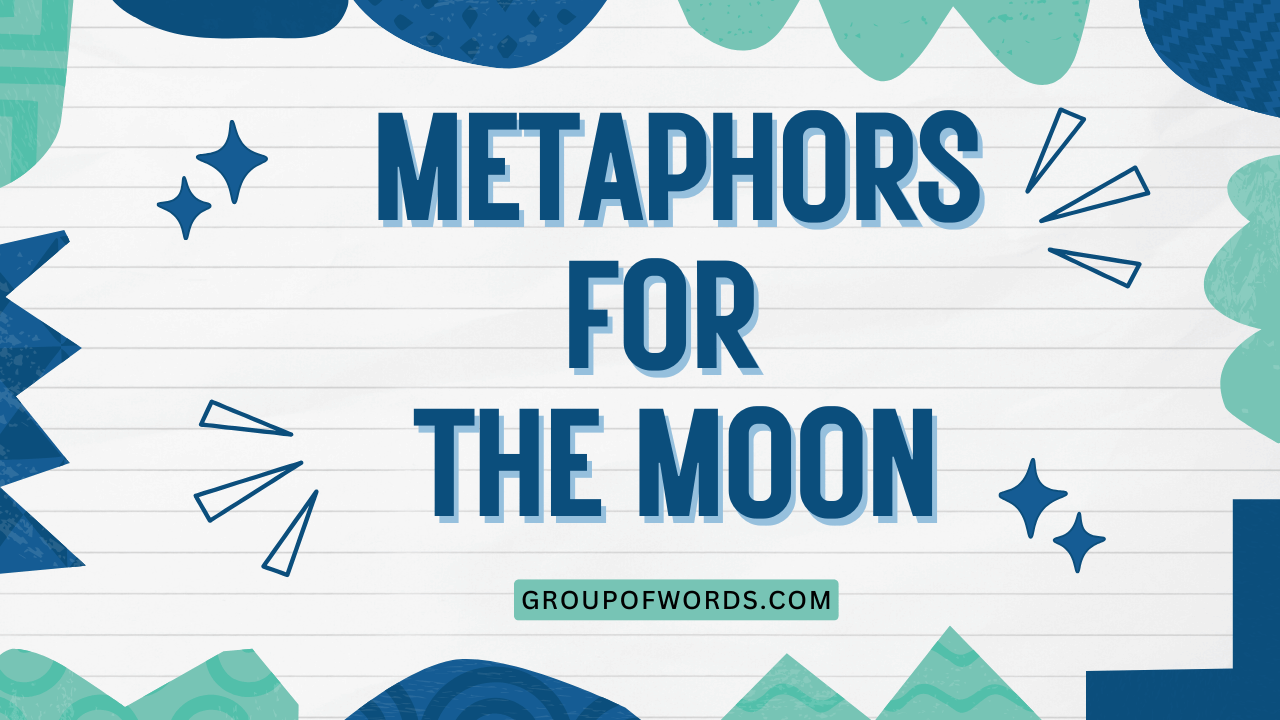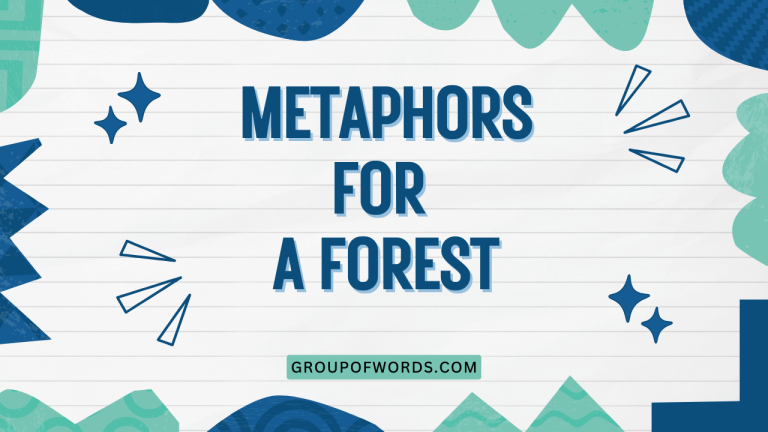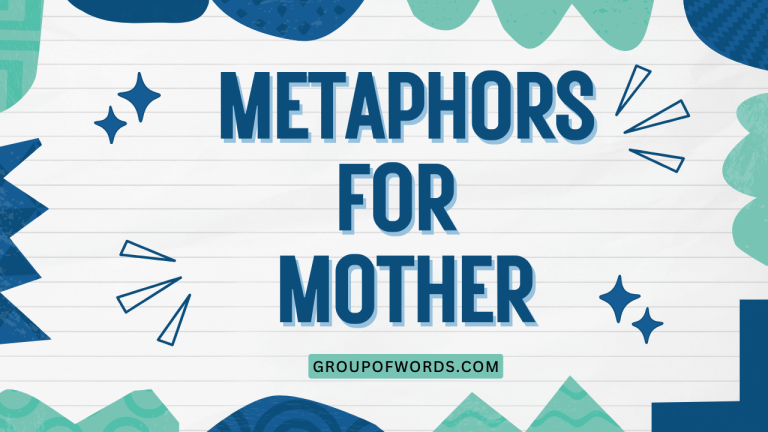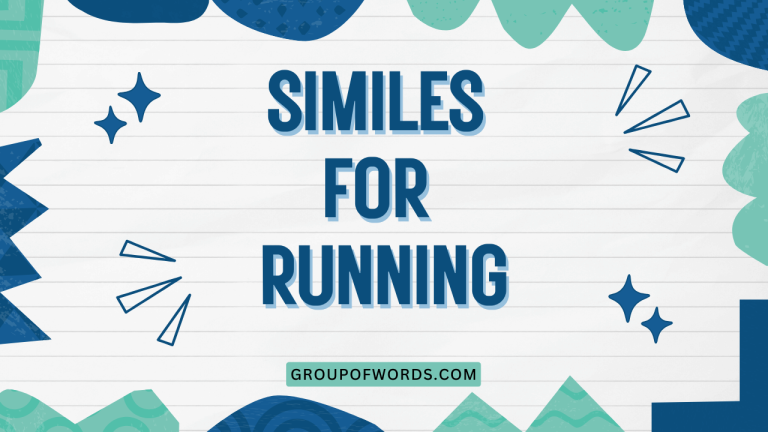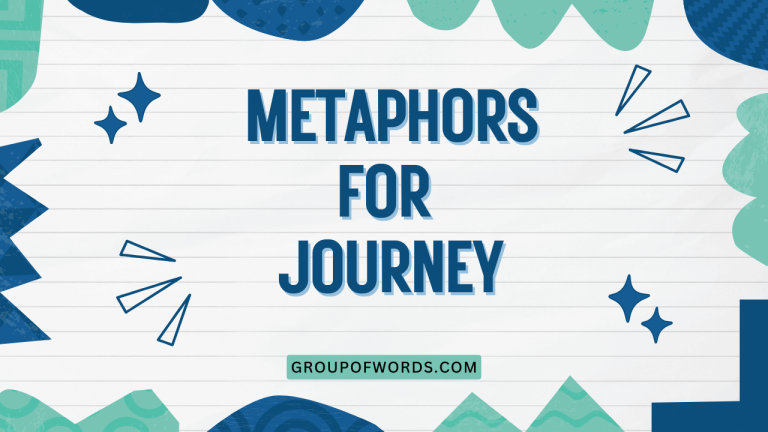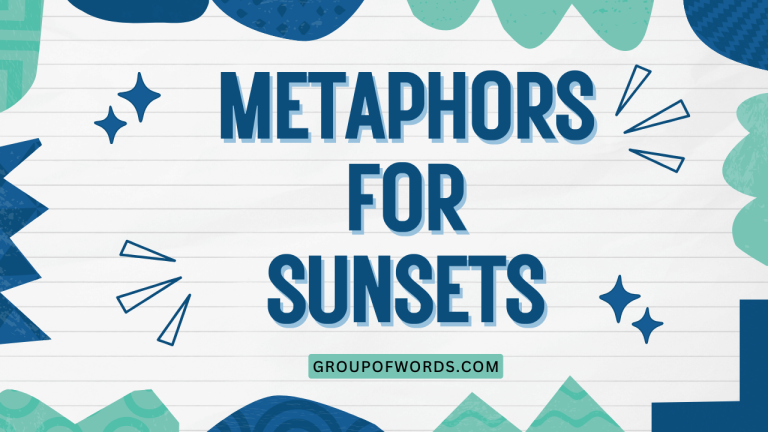Metaphors for the Moon: A Grammar Guide
The moon, a celestial body that has captivated humanity for millennia, frequently appears in literature, poetry, and everyday language. Understanding the metaphors used to describe the moon enriches our comprehension of English grammar and enhances our ability to interpret and appreciate figurative language.
This article provides a comprehensive guide to moon metaphors, exploring their grammatical structures, contextual usages, and common variations. This guide will benefit students, writers, and language enthusiasts seeking to deepen their understanding of metaphorical expressions and their role in crafting vivid and evocative imagery.
This article will cover the definition of metaphors, focusing on their application to the moon, structural breakdown, various types of moon metaphors, usage rules, and common mistakes. It also includes extensive examples, practice exercises, and advanced topics to ensure a thorough understanding.
Whether you are a beginner or an advanced learner, this guide will provide valuable insights and practical tools to master the art of using metaphors for the moon.
Table of Contents
- Definition of Metaphors for the Moon
- Structural Breakdown of Moon Metaphors
- Types and Categories of Moon Metaphors
- Examples of Moon Metaphors
- Usage Rules for Moon Metaphors
- Common Mistakes in Using Moon Metaphors
- Practice Exercises
- Advanced Topics in Moon Metaphors
- FAQ: Frequently Asked Questions
- Conclusion
Definition of Metaphors for the Moon
A metaphor is a figure of speech that directly compares two unrelated things without using “like” or “as.” It asserts that one thing is another to highlight shared qualities or create a vivid image. When applied to the moon, metaphors go beyond literal descriptions, infusing it with human emotions, characteristics, or symbolic meanings. These metaphors enrich our understanding of the moon’s significance and impact on human imagination.
Metaphors for the moon serve several functions. They can evoke emotions, create visual imagery, and convey deeper meanings.
For instance, describing the moon as a “silent guardian” suggests its protective presence and watchful nature. Similarly, calling it a “silver coin in the sky” creates a visual of its shape and color.
The context in which these metaphors are used significantly influences their interpretation.
The classification of moon metaphors involves understanding their grammatical structure and the types of figurative language employed. They can be classified based on the aspect of the moon they highlight: its appearance, its emotional impact, or its symbolic representation.
The function of these metaphors is to add depth and nuance to descriptions of the moon, making them more engaging and meaningful.
Structural Breakdown of Moon Metaphors
Understanding the structure of moon metaphors involves recognizing the two key elements: the tenor and the vehicle. The tenor is the subject being described (in this case, the moon), and the vehicle is the object or concept used to represent it. The effectiveness of a metaphor depends on the strength of the connection between the tenor and the vehicle.
The basic pattern of a moon metaphor is: “The moon is [vehicle].” For example, “The moon is a pearl” uses “pearl” as the vehicle to describe the moon’s luminous beauty. Another pattern is: “[Vehicle] of the night,” where the vehicle acts as a descriptor.
For instance, “The lamp of the night” uses “lamp” to highlight the moon’s illuminating function. The choice of vehicle determines the specific qualities or associations that are transferred to the moon.
The grammatical structure often involves using nouns, adjectives, and verbs to create the metaphorical link. Nouns identify the vehicle, adjectives describe its qualities, and verbs suggest actions or states of being.
For example, in the metaphor “The moon weeps silver tears,” “tears” (noun) and “weeps” (verb) create a powerful image of sorrow and beauty. The structural elements work together to create a cohesive and evocative metaphorical expression.
Types and Categories of Moon Metaphors
Personification
Personification is a type of metaphor where human qualities or actions are attributed to inanimate objects or abstract concepts. When applied to the moon, personification can create a sense of intimacy and connection.
It allows us to perceive the moon as a character with its own personality and emotions. Examples include “The moon watches over us” and “The moon smiles down on the world.”
In these examples, the moon is given the human actions of “watching” and “smiling,” which evokes a sense of protection and benevolence. Personification makes the moon more relatable and emotionally resonant.
The grammatical structure typically involves using verbs that describe human actions and assigning them to the moon.
The use of personification humanizes the moon, making it a more compelling and engaging subject in literature and poetry. It allows writers to explore themes of companionship, guidance, and empathy.
The effect of personification is to create a deeper emotional connection between the reader and the celestial body.
Simile
A simile is a figure of speech that compares two unlike things using “like” or “as.” While not strictly a metaphor, it is closely related and shares the function of drawing parallels between different objects or concepts. Moon similes often highlight the moon’s appearance, such as its shape, color, or brightness.
Examples include “The moon is like a silver coin” and “The moon shines as bright as a diamond.”
These similes use familiar objects (coin, diamond) to describe the moon’s characteristics. The comparison makes the description more vivid and accessible.
The grammatical structure involves using the words “like” or “as” to connect the moon with the object of comparison. Similes provide a clear and direct way to convey the moon’s qualities.
The use of similes allows for a more nuanced and precise description of the moon. It avoids the direct assertion of a metaphor while still creating a strong visual or emotional impact.
Similes are particularly effective in conveying the moon’s changing appearance and its various stages.
Symbolism
Symbolism involves using objects, people, or ideas to represent something else. The moon is often used as a symbol in literature and art to represent various concepts, such as femininity, cycles, change, and mystery.
Moon metaphors that incorporate symbolism add depth and complexity to the moon’s representation. For example, “The moon, a symbol of transformation” and “The moon, a beacon of hope in the darkness.”
In these examples, the moon is not merely an object but a representation of abstract ideas. “Transformation” and “hope” are symbolic meanings associated with the moon.
The grammatical structure often involves using appositives or phrases that explain the moon’s symbolic significance. Symbolism enriches the moon’s metaphorical representation.
The symbolic use of the moon varies across cultures and contexts. It can represent different aspects of human experience, from love and romance to death and rebirth.
Understanding the symbolic meanings of the moon enhances our appreciation of its role in literature and art. The power of symbolism lies in its ability to convey complex ideas through simple images.
Hyperbole
Hyperbole is the use of exaggeration to create emphasis or effect. Moon metaphors that employ hyperbole exaggerate the moon’s qualities or impact.
Examples include “The moon was a million times brighter than the sun” and “The moon’s light could illuminate the entire universe.” These statements are obviously not literally true, but they serve to highlight the moon’s brilliance and power.
Hyperbolic metaphors are used to create a sense of awe and wonder. They amplify the moon’s presence and make it seem larger than life.
The grammatical structure involves using adverbs and adjectives that intensify the description. Hyperbole adds drama and impact to moon metaphors.
The effectiveness of hyperbole depends on the context and the audience. It should be used judiciously to avoid sounding insincere or ridiculous.
When used well, hyperbole can create a memorable and striking image of the moon. The key is to use exaggeration in a way that enhances the overall effect of the metaphor.
Examples of Moon Metaphors
The following section provides extensive examples of moon metaphors, categorized by their primary focus: color and shape, emotional and symbolic meanings, nature-related associations, and mythological connections. Each category includes a detailed table with numerous examples to illustrate the variety and richness of moon metaphors.
Color and Shape Metaphors
These metaphors focus on the visual aspects of the moon, such as its color, shape, and size. They often use comparisons to familiar objects to create a clear and vivid image.
The moon’s varying phases and colors provide ample opportunities for creative metaphorical descriptions.
The table below contains 30 examples of color and shape-related moon metaphors, showcasing the diverse ways in which the moon’s appearance can be described.
| Metaphor | Explanation |
|---|---|
| The moon is a silver coin. | Highlights the moon’s color and shape. |
| The moon is a golden orb. | Emphasizes its round shape and warm color. |
| The moon is a pearl in the sky. | Suggests its luminous and precious quality. |
| The moon is a crescent smile. | Describes the crescent moon’s shape. |
| The moon is a spectral disc. | Highlights its pale and ethereal appearance. |
| The moon is a celestial lantern. | Emphasizes its role as a light source. |
| The moon is a frosty globe. | Suggests its cold and distant nature. |
| The moon is a pale wafer. | Describes its thin and delicate appearance. |
| The moon is a luminous button. | Highlights its small and bright appearance. |
| The moon is a ghostly galleon. | Evokes a sense of mystery and adventure. |
| The moon is a porcelain plate. | Suggests its smooth and white surface. |
| The moon is a celestial eye. | Highlights its watchful and observing nature. |
| The moon is a silvery sickle. | Describes the crescent moon’s sharp shape. |
| The moon is a polished mirror. | Suggests its reflective quality. |
| The moon is a luminous tear. | Evokes a sense of sadness and beauty. |
| The moon is a chalky circle. | Highlights its pale color and round shape. |
| The moon is a spectral balloon. | Suggests its large and ethereal appearance. |
| The moon is a celestial watch. | Emphasizes its role in marking time. |
| The moon is a luminous pearl. | Highlights its lustrous and precious qualities. |
| The moon is a shimmering coin. | Emphasizes its bright and metallic appearance. |
| The moon is a pearly button. | Highlights its small and lustrous appearance. |
| The moon is a creamy disc. | Suggests its smooth and pale surface. |
| The moon is a silver sickle. | Emphasizes its sharp and curved shape. |
| The moon is a spectral eye. | Highlights its mysterious and watchful gaze. |
| The moon is a chalky sphere. | Suggests its pale color and round shape. |
| The moon is a polished globe. | Emphasizes its smooth and reflective surface. |
| The moon is a luminous balloon. | Highlights its large and bright appearance. |
| The moon is a silvery watch. | Emphasizes its role in marking the passage of time. |
| The moon is a pale lantern. | Suggests its faint and gentle light. |
| The moon is a frosty coin. | Highlights its cold and bright appearance. |
Emotional and Symbolic Metaphors
These metaphors explore the emotional and symbolic meanings associated with the moon. They often reflect human feelings, such as love, sorrow, hope, and mystery.
The moon’s cyclical nature and its influence on tides and emotions make it a potent symbol for various human experiences.
The table below contains 30 examples of emotional and symbolic moon metaphors, illustrating the depth and complexity of the moon’s symbolic representation.
| Metaphor | Explanation |
|---|---|
| The moon is a silent guardian. | Suggests its protective and watchful presence. |
| The moon is a beacon of hope. | Emphasizes its role as a source of guidance and inspiration. |
| The moon is a symbol of change. | Highlights its cyclical nature and constant transformation. |
| The moon is a muse of poets. | Suggests its inspiring influence on creativity. |
| The moon is a mirror of the soul. | Emphasizes its reflection of inner emotions and thoughts. |
| The moon is a queen of the night. | Highlights its regal and dominant presence. |
| The moon is a whisper of secrets. | Suggests its mysterious and enigmatic nature. |
| The moon is a solace for the lonely. | Emphasizes its comforting presence in times of solitude. |
| The moon is a reminder of dreams. | Suggests its connection to imagination and aspirations. |
| The moon is a companion in darkness. | Highlights its comforting presence in difficult times. |
| The moon is a silent observer. | Suggests its detached and impartial perspective. |
| The moon is a harbinger of tides. | Emphasizes its influence on natural rhythms. |
| The moon is a guide for travelers. | Highlights its role in navigation and direction. |
| The moon is a symbol of femininity. | Suggests its association with intuition and nurturing. |
| The moon is a mistress of mystery. | Emphasizes its enigmatic and alluring nature. |
| The moon is a whisper of romance. | Suggests its connection to love and passion. |
| The moon is a solace for the weary. | Highlights its comforting presence for those who are tired. |
| The moon is a reminder of beauty. | Suggests its connection to aesthetic appreciation and wonder. |
| The moon is a companion for wanderers. | Highlights its comforting presence for those who roam. |
| The moon is a silent confidant. | Suggests its ability to listen without judgment. |
| The moon is a harbinger of change. | Emphasizes its role in signaling transitions and transformations. |
| The moon is a guide for dreamers. | Highlights its role in inspiring and directing imaginative thoughts. |
| The moon is a symbol of intuition. | Suggests its association with inner wisdom and insight. |
| The moon is a mistress of the night. | Emphasizes its control and allure during nighttime hours. |
| The moon is a whisper of magic. | Suggests its association with enchantment and wonder. |
| The moon is a solace for the heartbroken. | Highlights its comforting presence for those experiencing emotional pain. |
| The moon is a reminder of wonder. | Suggests its connection to curiosity and amazement. |
| The moon is a companion for thinkers. | Highlights its comforting presence for those who contemplate. |
| The moon is a silent witness. | Suggests its role as an observer of events without intervention. |
| The moon is a harbinger of secrets. | Emphasizes its association with hidden knowledge and mysteries. |
Nature-Related Metaphors
These metaphors connect the moon with elements of nature, such as the sea, the sky, and the stars. They often highlight the moon’s relationship with the natural world and its influence on the environment.
These metaphors can evoke a sense of harmony and interconnectedness.
The table below contains 30 examples of nature-related moon metaphors, showcasing the diverse ways in which the moon is connected to the natural world.
| Metaphor | Explanation |
|---|---|
| The moon is a pearl in the ocean of night. | Connects the moon to the vastness of the night sky. |
| The moon is a lantern in the celestial forest. | Emphasizes its role as a light source in the night sky. |
| The moon is a shepherd of the tides. | Highlights its influence on the ocean’s movements. |
| The moon is a flower in the garden of stars. | Suggests its beauty and uniqueness among the stars. |
| The moon is a leaf on the tree of night. | Emphasizes its delicate and transient nature. |
| The moon is a dewdrop in the sky’s meadow. | Connects the moon to the freshness and purity of nature. |
| The moon is a pebble on the beach of stars. | Highlights its smallness in the vastness of the cosmos. |
| The moon is a cloud in the ocean of space. | Emphasizes its ethereal and transient nature. |
| The moon is a star’s silent sister. | Suggests a close but quiet relationship with the stars. |
| The moon is a reflection in the sky’s pond. | Highlights its reflective quality and connection to the sky. |
| The moon is a pearl among the stars. | Emphasizes its beauty and uniqueness in the night sky. |
| The moon is a lantern in the dark expanse. | Highlights its role as a guiding light in the night. |
| The moon is a shepherd of the sea. | Emphasizes its control over the tides and ocean life. |
| The moon is a flower in the garden of night. | Suggests its delicate beauty in the darkness. |
| The moon is a leaf on the branches of space. | Highlights its fleeting presence in the cosmos. |
| The moon is a dewdrop on the meadow of stars. | Connects the moon to the serene and vast sky. |
| The moon is a pebble on the shore of the universe. | Emphasizes its small significance in the grand scheme. |
| The moon is a cloud in the sea of night. | Highlights its soft and transient appearance. |
| The moon is a star’s gentle companion. | Suggests a harmonious and supportive relationship. |
| The moon is a reflection in the pond of the cosmos. | Emphasizes its role in reflecting the universe’s beauty. |
| The moon is a wave in the ocean of space. | Highlights its rhythmic and cyclical nature. |
| The moon is a firefly in the night’s meadow. | Emphasizes its small but significant light. |
| The moon is a whisper in the forest of stars. | Suggests its subtle but profound presence. |
| The moon is a tear in the fabric of night. | Highlights its luminescent and emotional impact. |
| The moon is a ripple in the pond of heavens. | Emphasizes its gentle and pervasive influence. |
| The moon is a petal in the garden of cosmos. | Suggests its delicate and essential beauty. |
| The moon is a feather in the sky’s vast expanse. | Highlights its light and ethereal quality. |
| The moon is a stone in the river of time. | Emphasizes its enduring presence through history. |
| The moon is a breath in the silence of space. | Suggests its essential and life-giving role. |
| The moon is a shadow in the light of stars. | Highlights its contrasting and complementary nature. |
Mythological Metaphors
These metaphors draw upon mythological figures and stories associated with the moon across different cultures. They often imbue the moon with divine or mythical qualities, reflecting ancient beliefs and legends.
These metaphors add a layer of historical and cultural significance to the moon’s representation.
The table below contains 20 examples of mythological moon metaphors, showcasing the diverse cultural associations with the moon.
| Metaphor | Explanation |
|---|---|
| The moon is Luna’s chariot. | Refers to the Roman goddess of the moon. |
| The moon is Selene’s tear. | Refers to the Greek goddess of the moon. |
| The moon is Artemis’s bow. | Refers to the Greek goddess of the hunt and the moon. |
| The moon is Chang’e’s palace. | Refers to the Chinese moon goddess. |
| The moon is Thoth’s scribe. | Refers to the Egyptian god of the moon and knowledge. |
| The moon is Mawu’s eye. | Refers to the African moon goddess. |
| The moon is Mani’s shield. | Refers to the Norse god of the moon. |
| The moon is Tsukuyomi’s mirror. | Refers to the Japanese god of the moon. |
| The moon is Khonsu’s clock. | Refers to the Egyptian god of the moon and time. |
| The moon is Coyolxauhqui’s disc. | Refers to the Aztec moon goddess. |
| The moon is Luna’s silver path. | Highlights the Roman goddess’s journey across the sky. |
| The moon is Selene’s gentle glow. | Highlights the Greek goddess’s serene light. |
| The moon is Artemis’s watchful gaze. | Highlights the Greek goddess’s protective presence. |
| The moon is Chang’e’s eternal home. | Highlights the Chinese goddess’s celestial abode. |
| The moon is Thoth’s timeless knowledge. | Highlights the Egyptian god’s wisdom and understanding. |
| The moon is Mawu’s guiding light. | Highlights the African goddess’s role in guidance. |
| The moon is Mani’s protective watch. | Highlights the Norse god’s guardianship. |
| The moon is Tsukuyomi’s silent wisdom. | Highlights the Japanese god’s quiet knowledge. |
| The moon is Khonsu’s rhythmic pulse. | Highlights the Egyptian god’s connection to time. |
| The moon is Coyolxauhqui’s shattered dream. | Highlights the Aztec goddess’s tragic story. |
Usage Rules for Moon Metaphors
Using moon metaphors effectively requires understanding certain rules. First, ensure the metaphor is relevant and adds meaning to the description.
Avoid clichés and strive for originality. Second, maintain consistency within the metaphor; do not mix unrelated images or ideas.
Third, consider the context and audience when choosing a metaphor. What resonates with one group may not with another.
Clarity is paramount. The metaphor should enhance understanding, not obscure it. If the comparison is too abstract or convoluted, it may confuse the reader. The goal is to create a vivid and memorable image, not to demonstrate cleverness at the expense of clarity. Choose metaphors that are accessible and relatable.
Appropriateness is another key factor. The metaphor should align with the tone and style of the writing. A humorous metaphor may be inappropriate in a serious or somber context. Conversely, a overly formal metaphor may feel out of place in a casual or informal setting. The metaphor should enhance the overall impact of the writing.
Common Mistakes in Using Moon Metaphors
One common mistake is using clichéd metaphors. Phrases like “the moon is a silver disc” are overused and lack impact. Strive for originality by finding fresh and unexpected comparisons. Instead of “silver disc,” consider “a polished mirror” or “a spectral coin.”
Another mistake is mixing metaphors. For example, “The moon is a silver coin sailing through the ocean of stars.” Here, the moon is both a coin and a ship, creating a confusing image. Maintain consistency by choosing a single, coherent image. Try: “The moon is a silver coin adrift in the sea of night.”
Inappropriate metaphors can also detract from the writing. Using a metaphor that is too abstract or obscure can confuse the reader. For example, “The moon is a quantum entanglement of celestial resonance” may be technically accurate but lacks clarity and emotional impact. Opt for metaphors that are accessible and evocative.
Here is a table illustrating some common mistakes and their corrections:
| Incorrect | Correct | Explanation |
|---|---|---|
| The moon is a silver disc sailing through the ocean. | The moon is a silver coin adrift in the sea of night. | Avoid mixing metaphors. |
| The moon is a quantum entanglement of celestial resonance. | The moon is a silent guardian watching over the world. | Ensure clarity and accessibility. |
| The moon is a silver disc. | The moon is a spectral coin in the velvet sky. | Avoid clichéd metaphors. |
| The moon is a beacon of hope, but it’s also a dark cloud. | The moon is a beacon of hope in the darkest night. | Maintain consistency of tone and imagery. |
| The moon is a lightbulb in the sky. | The moon is a celestial lantern illuminating the night. | Choose metaphors that evoke beauty and wonder. |
Practice Exercises
Test your understanding of moon metaphors with these exercises. Each exercise focuses on different aspects of using and identifying metaphors.
Answers are provided at the end of the section.
Exercise 1: Identifying Metaphors
Identify the metaphors in the following sentences.
| Question | Answer |
|---|---|
| 1. The moon is a pearl in the velvet sky. | The moon is a pearl |
| 2. Her smile was as bright as the moon. | (Simile, not a metaphor) |
| 3. The moon is a silent guardian watching over us. | The moon is a silent guardian |
| 4. The moon shines like a diamond. | (Simile, not a metaphor) |
| 5. The moon is a mirror reflecting our dreams. | The moon is a mirror |
| 6. The moon is a chalky circle in the inky expanse. | The moon is a chalky circle |
| 7. The moon is a spectral balloon floating in the sky. | The moon is a spectral balloon |
| 8. The moon is a frosty coin in the celestial bank. | The moon is a frosty coin |
| 9. The moon is a luminous button adorning the night. | The moon is a luminous button |
| 10. The moon is a porcelain plate hanging in the cosmos. | The moon is a porcelain plate |
Exercise 2: Completing Metaphors
Complete the following metaphors with an appropriate vehicle.
| Question | Answer |
|---|---|
| 1. The moon is a ________ of the night. | lamp / beacon / guardian |
| 2. The moon is a ________ in the sky. | pearl / coin / orb |
| 3. The moon is a ________ of hope. | symbol / beacon / promise |
| 4. The moon is a ________ for the lonely. | solace / companion / friend |
| 5. The moon is a ________ of dreams. | reminder / mirror / whisper |
| 6. The moon is a ________ in the ocean of night. | pearl / reflection / wave |
| 7. The moon is a ________ in the garden of stars. | flower / gem / jewel |
| 8. The moon is a ________ of the tides. | shepherd / guide / master |
| 9. The moon is a ________ in the forest of darkness. | lantern / light / firefly |
| 10. The moon is a ________ in the silence of space. | breath / whisper / secret |
Exercise 3: Rewriting Clichés
Rewrite the following clichéd metaphors to make them more original.
| Question | Answer |
|---|---|
| 1. The moon is a silver disc. | The moon is a spectral coin in the velvet sky. |
| 2. The moon is a light in the darkness. | The moon is a celestial lantern illuminating the night. |
| 3. The moon is a pearl. | The moon is a luminous tear in the eye of the sky. |
| 4. The moon is a friend. | The moon is a silent confidant in the quiet night. |
| 5. The moon is a circle in the sky. | The moon is a chalky sphere hanging in the cosmos. |
| 6. The moon is a bright light. | The moon is a shimmering beacon in the dark expanse. |
| 7. The moon is always there. | The moon is a constant presence in the ever-changing sky. |
| 8. The moon is beautiful. | The moon is an ethereal beauty adorning the night. |
| 9. The moon is high in the sky. | The moon is suspended like a pearl in the inky heavens. |
| 10. The moon is like a lamp. | The moon is a celestial lantern guiding lost souls. |
Advanced Topics in Moon Metaphors
For advanced learners, exploring the cultural and historical contexts of moon metaphors can provide deeper insights. Different cultures have unique interpretations and symbolic associations with the moon.
